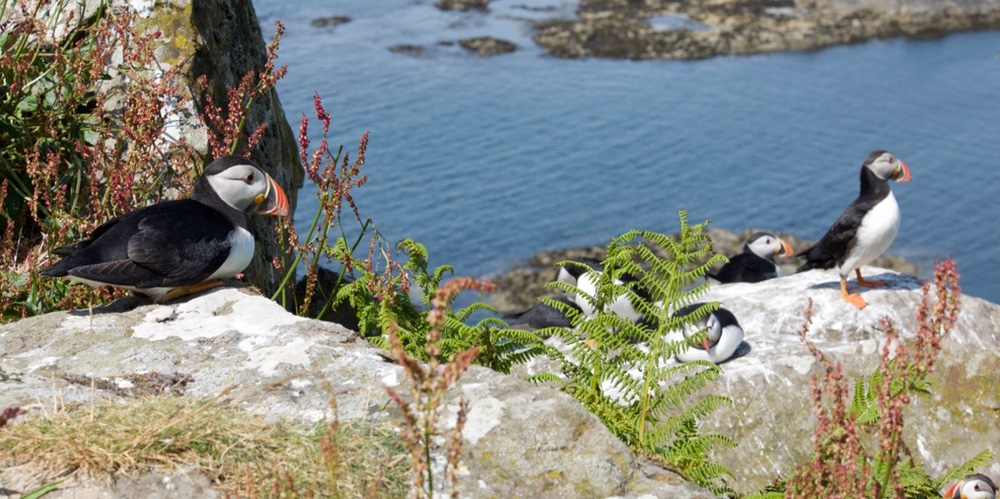
The Treshnish Isles
The Treshnish Isles are not the most easily accessible of islands, lying about four miles off the west coast of Mull, itself an island; and their rocky coasts present a challenge to anyone wanting to land, especially in rough weather. There is, however, a very good reason why loads of visitors persist in their efforts to get ashore on this tiny archipelago, and it can be summed up in one word: puffins.
What is it about puffins? They are so uniquely endearing. On a warm day at the end of June, while we were wandering around Lunga, the largest of the Treshnish Isles, we spent most of the time with huge smiles on our faces. Once you’ve scrambled over the boulders on the shore and hiked up the short path to the grassy ‘mainland’, the puffins are right there – thousands of them, dotted everywhere on the ground, either standing outside the entrances to their nest burrows or socialising with their neighbours. Some of them were affectionately clattering bills with their partners while others would suddenly take flight and whirr out across the sea on ridiculously short wings, performing a brief loop around the bay and then landing back on their home patch again. It was just mesmerising.
Atlantic puffins (Fratercula arctica) breed on many islands around Britain’s coast. Their Latin name means ‘little friar of the Arctic’, which is quite fitting in view of the fact that many of their breeding islands were settled by early Christian missionary-hermits. The female lays a single egg in late April or early May, and when it is hatched both parents share the never-ending duties of catching small fish such as sprats and sand eels for their ravenous youngster. By mid-August they have all gone, and many embark on surprisingly long journeys across the ocean. They spend the winter at sea and return the following spring, often re-occupying the same burrow from the previous year.
Although puffins have webbed feet, there are claws on each toe which serve as efficient excavators: as we watched, occasional puffs of earth would emerge as, presumably, an unseen but industrious puffin was doing a bit of housework. The youngsters, known as ‘pufflings’, stay safely inside their burrows until they are ready to leave the nest; from the ground beneath our feet we could hear deep cooing sounds, appealingly human-like in tone.
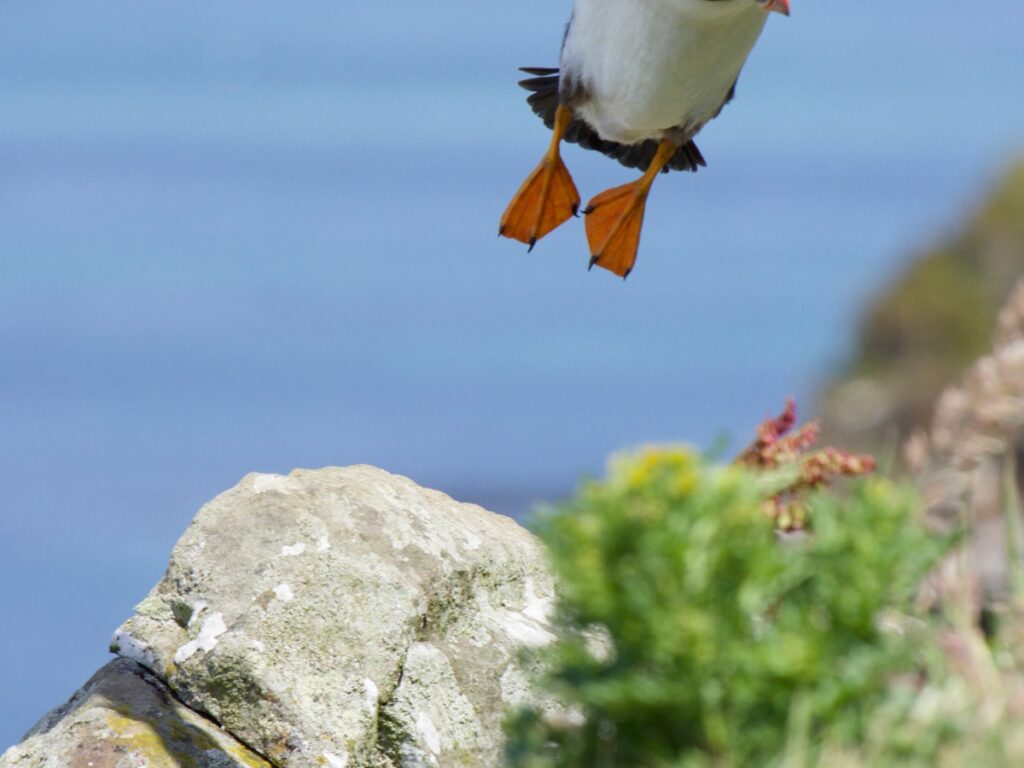
A puffin obligingly displaying his feet
It’s hard to work out why puffins allow humans to approach them so closely, because they were at one time hunted for food, like many other seabirds. But the truth is that if you keep a respectful distance and sit quietly on the grass, they will carry on their busy social lives as if you weren’t there. With their slightly ponderous, deliberate gait, and their earnest expressions, they are totally bewitching. I’d forgotten just how small they are – only about 10 inches long – and their markings are absolutely beautiful. Up close, you can see that their brilliant beaks are actually made up of ‘plates’ that appear almost to be stitched on to the face, with a little serrated rim around the edge. These colourful plates are shed in winter, and the puffin loses its bright eye markings to become much more muted in appearance.
Puffins aren’t the only inhabitants of the Treshnish Isles, although they do steal the show. From Harp Rock, a rock stack off the west coast, rose the constant noise and pungent aroma of a huge colony of guillemots and razorbills, all crammed together in a teeming, tumultuous mass. The air space above and around it was alive with birds. Occasionally we came across a shag, emerald-eyed and baleful, guarding its chick in the hollow beneath a boulder. It was such a strange experience to encounter these birds at close range – I felt as if I’d stepped into an alternative world in which wildlife and humans have always co-existed in harmony.
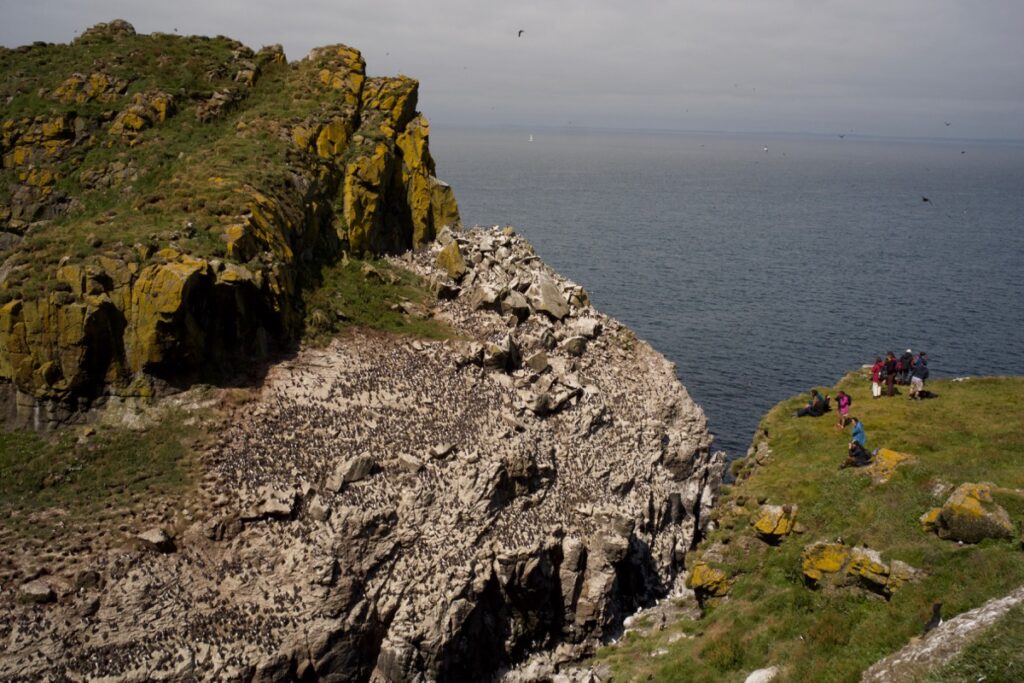
Above and below: masses of sea birds on the flank of Harp Rock
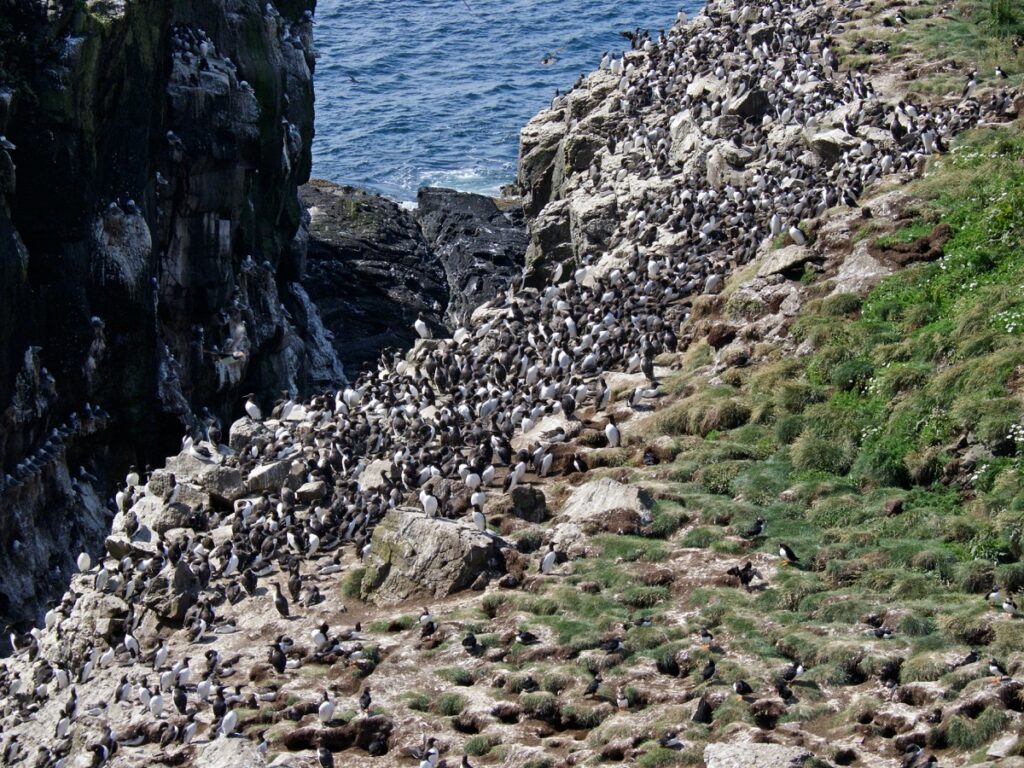

Shag
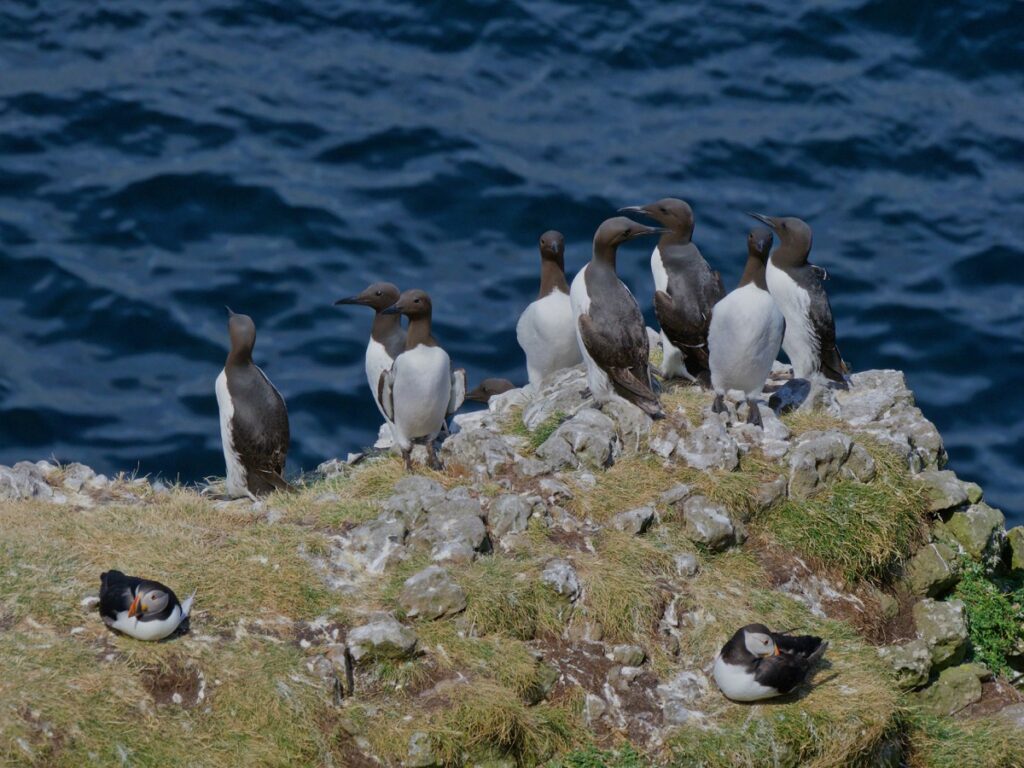
Guillemots (above) and razorbill (below)
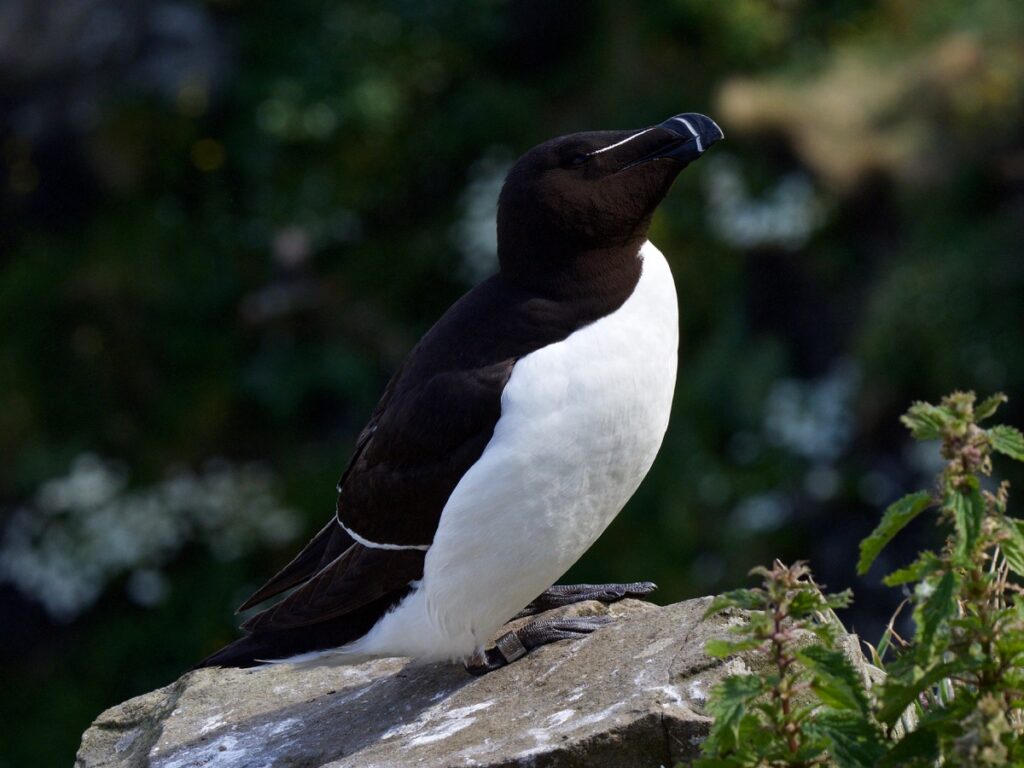
Lunga isn’t a big island – about 145 acres – and its highest point is 338 feet above sea level. We climbed to the top, temporarily leaving behind the clamour of seabirds to find that the higher slopes were haunted by rock pipits and blue butterflies; here and there, the creamy blooms of burnet rose, low-growing and deliciously fragrant, studded the grass. To the west, in the far distance we could see a long low land mass – possibly Coll – while to the east, the cliffs of Mull rose from the sea and the angular shape of Staffa floated in the blue haze to the south. What is it about islands? I’m sure that in winter the Treshnish Isles can be unbearably foul, but on a warm summer afternoon they held a kind of dreamy bliss that made me want to stay there forever.
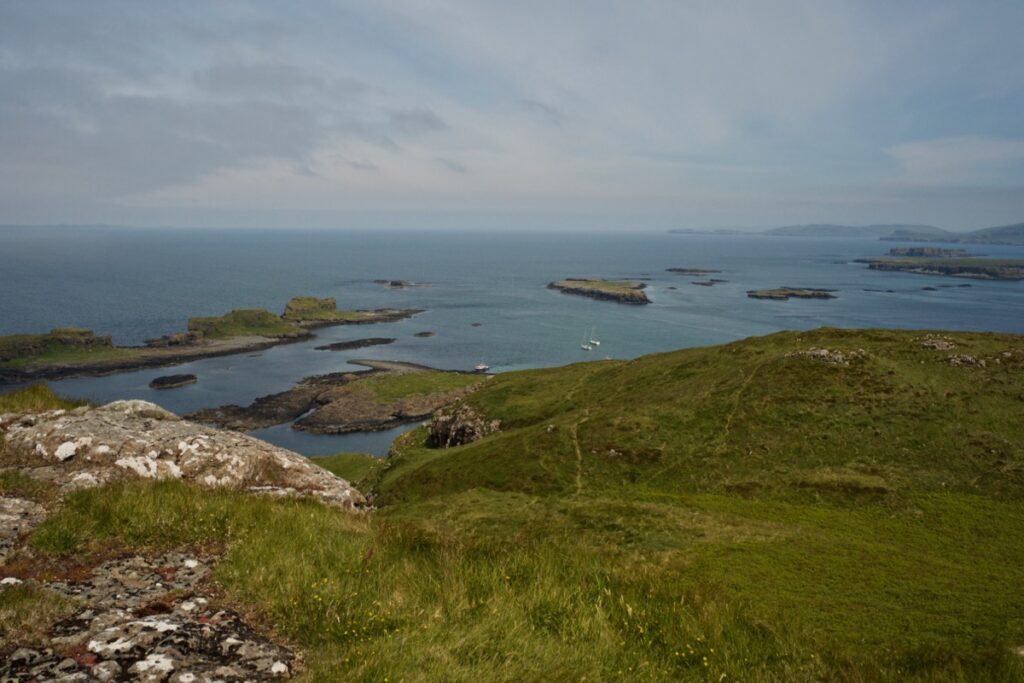
Human occupation of the Treshnish Isles
The islands might seem remote to us now, but in centuries past they would have made convenient stopping points along well-known sea routes. From early medieval times, their possession gave a significant advantage to those warriors and clans looking to expand or reinforce their domains.
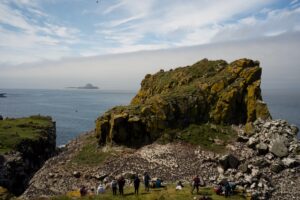
On top of Harp Rock (right) is Dun Cruit, which means ‘Pictish fort’, and it has been speculated that a drawbridge once spanned the narrow gap that separates it from Lunga. All that remains of a possible settlement is a low stone wall on the landward side. In the south-east of Lunga is the site of a possible second fort, as well as traces of later buildings, together with a kiln and what is thought to be the remains of a whisky still.
To the north-east, the island of Fladda, which is nearly a mile long, has ruined buildings, enclosures and traces of cultivation that attest to human habitation; there may also have been an early chapel and burial ground.
On the twin islands of Cairn na Burgh More and Cairn na Burgh Beg are the remains of an important castle which is mentioned in one of the Norse sagas. A fortress existed here for centuries: at one time, the Macleans of Duart on Mull were keepers of the castle, and it was occupied by government forces during the Jacobite rising of 1715.
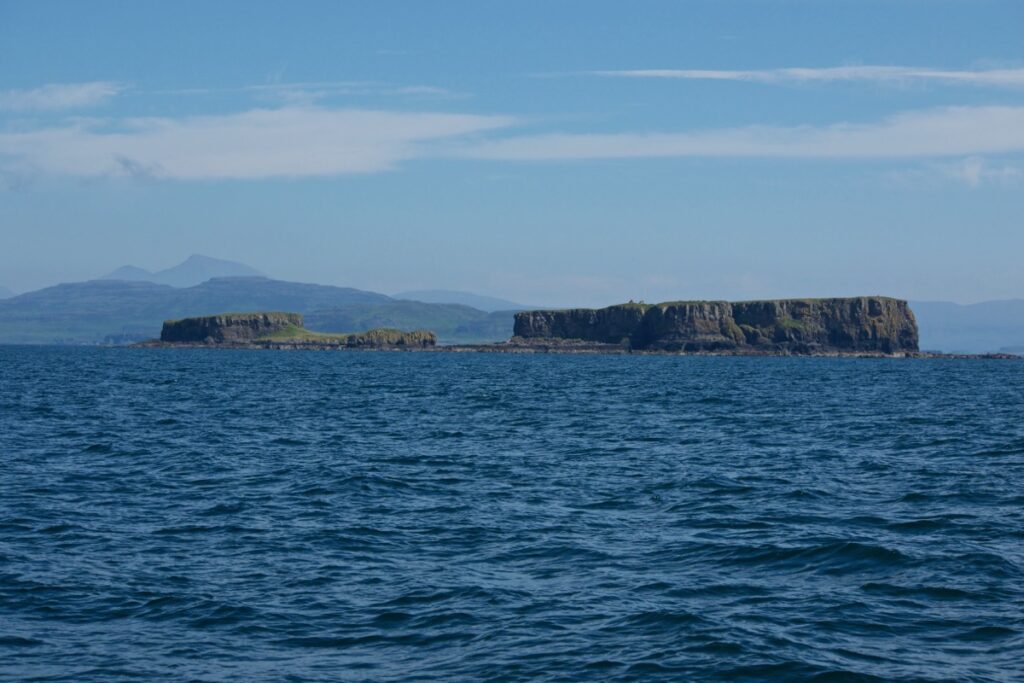
Cairn na Burgh Beg and Cairn na Burgh Mor
In 1800, there were around 20 people living on Lunga. It is believed that the last permanent inhabitants departed in 1824, but summer occupation continued until 1857, when Donald Campbell and his family left the island.
The Treshnish Isles are now owned by the Hebridean Trust, and since 1971 the Treshnish Isles Auk Ringing Group has monitored the breeding sea bird populations. Annual reports are available on their website. No survey took place in 2020, but in 2019 on Lunga and nearby Sgeir a’Chaisteil there were 3,135 apparently occupied puffin burrows.
Visiting the Treshnish Isles
Part of the Ten-fathom chart of the Firth of Clyde and Western Islands of Scotland, Ailsa Craig to Ardnamurchan (May 1904), showing the Treshnish Isles to the far west of Mull. Map courtesy National Library of Scotland
The islands are understandably very popular with visitors in summer, and there are many tour operators now offering trips there. The wildlife is, however, extremely precious and fragile. If you are thinking of visiting, take a look at the list of operators recommended by The Hebridean Trust, as these promote responsible behaviour. We travelled in a group with Coastal Connection, on a specially chartered boat out of Oban. On our outward journey we were joined by a pod of bottlenose dolphins!
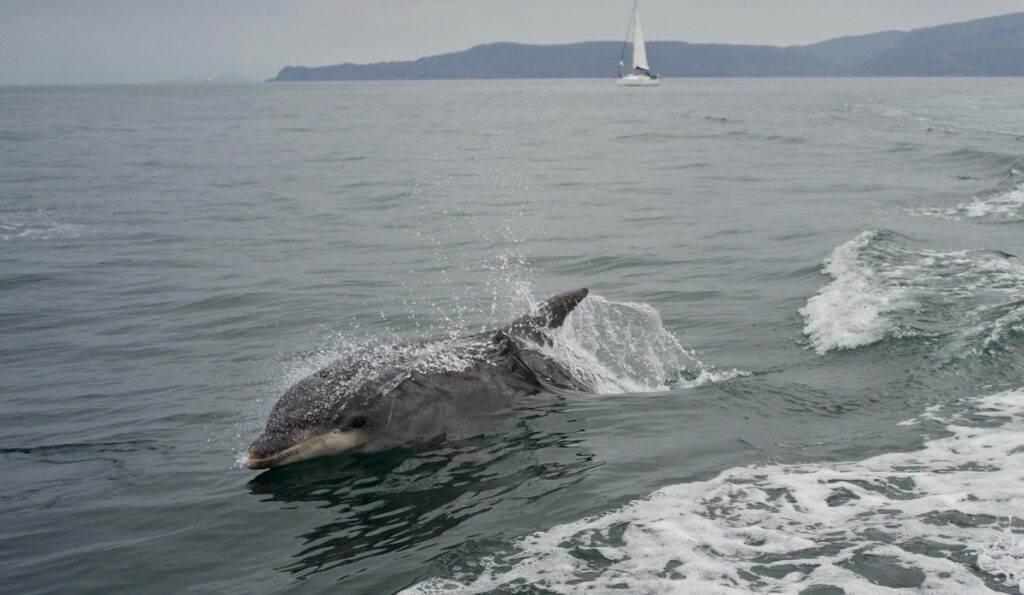
Further reading:
If you’re interested in reading more about puffins, I can recommend ‘The Seabird’s Cry’ by Adam Nicolson.
All images © Colin & Jo Woolf

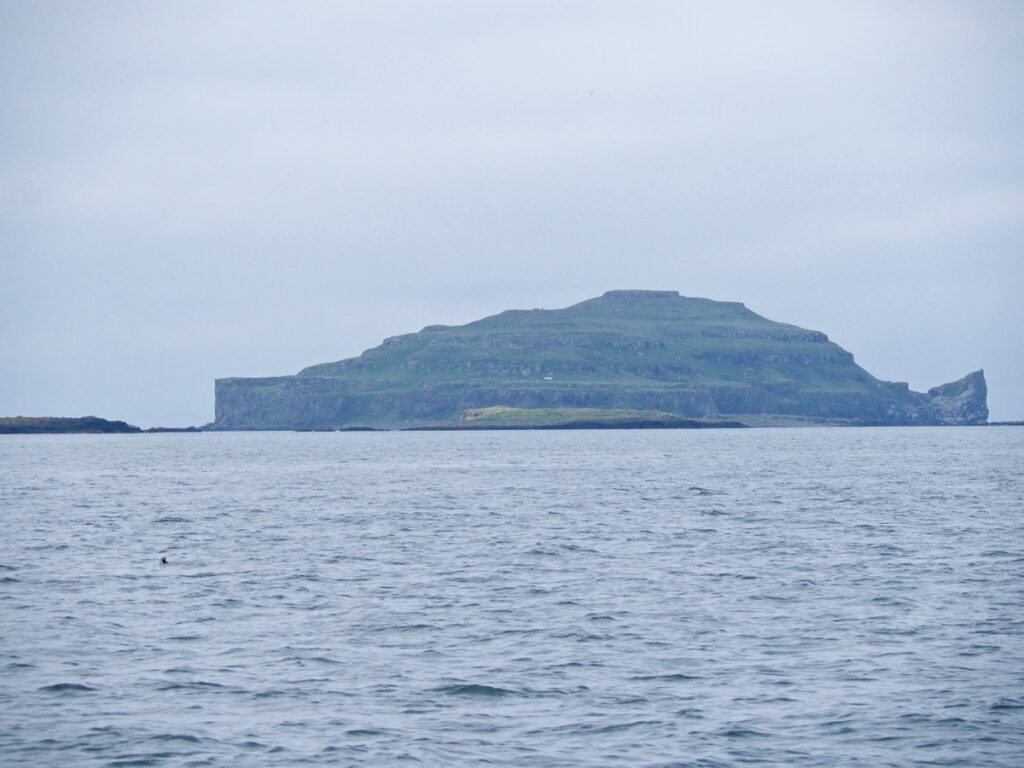
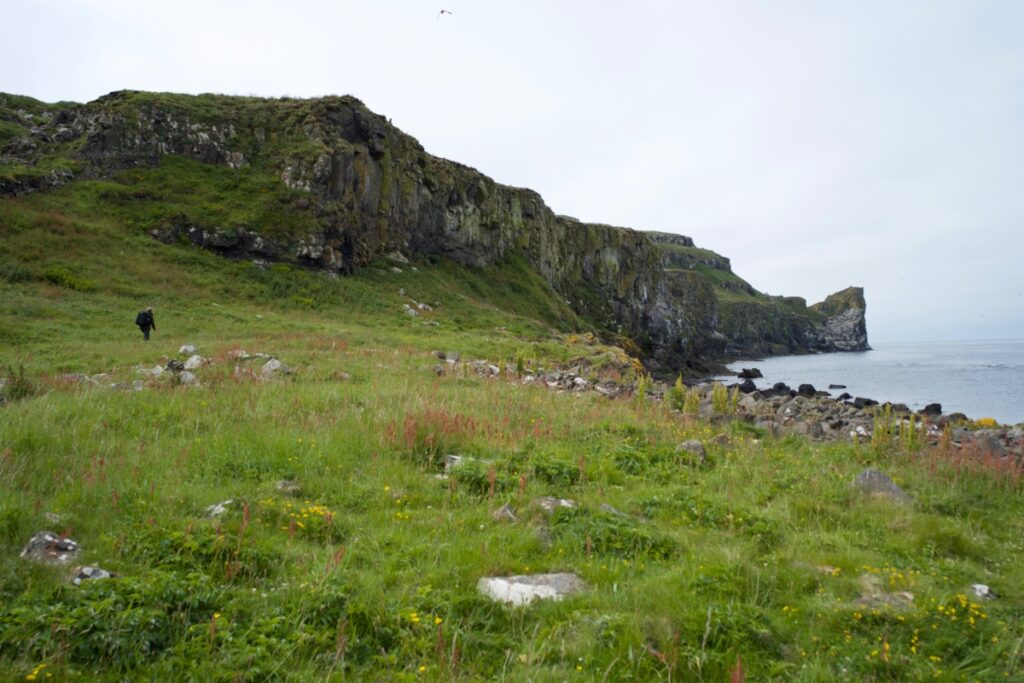
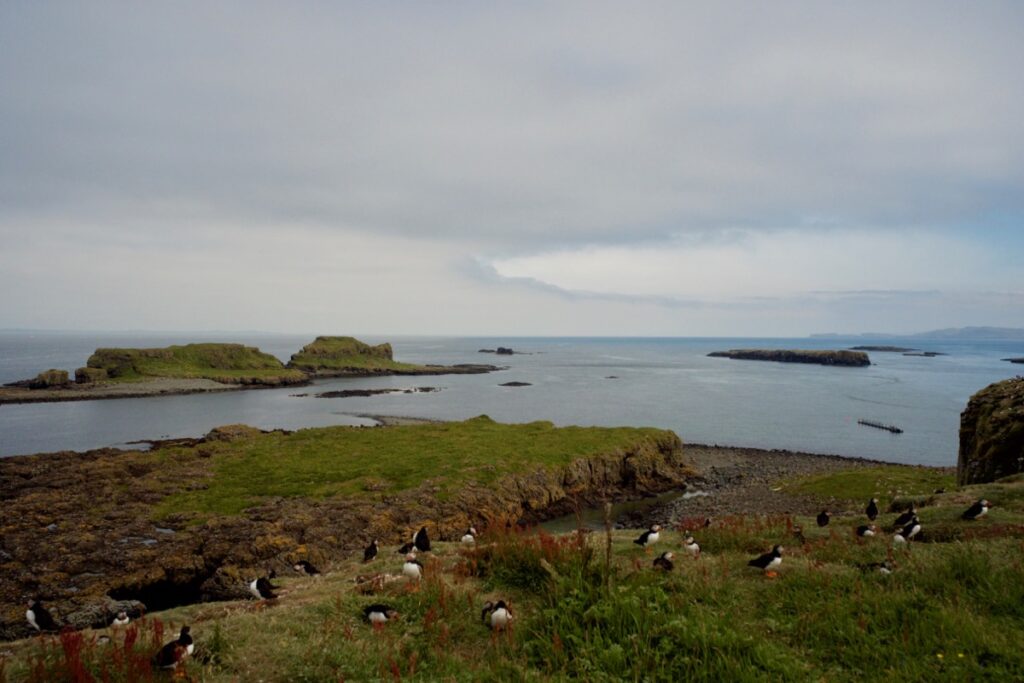
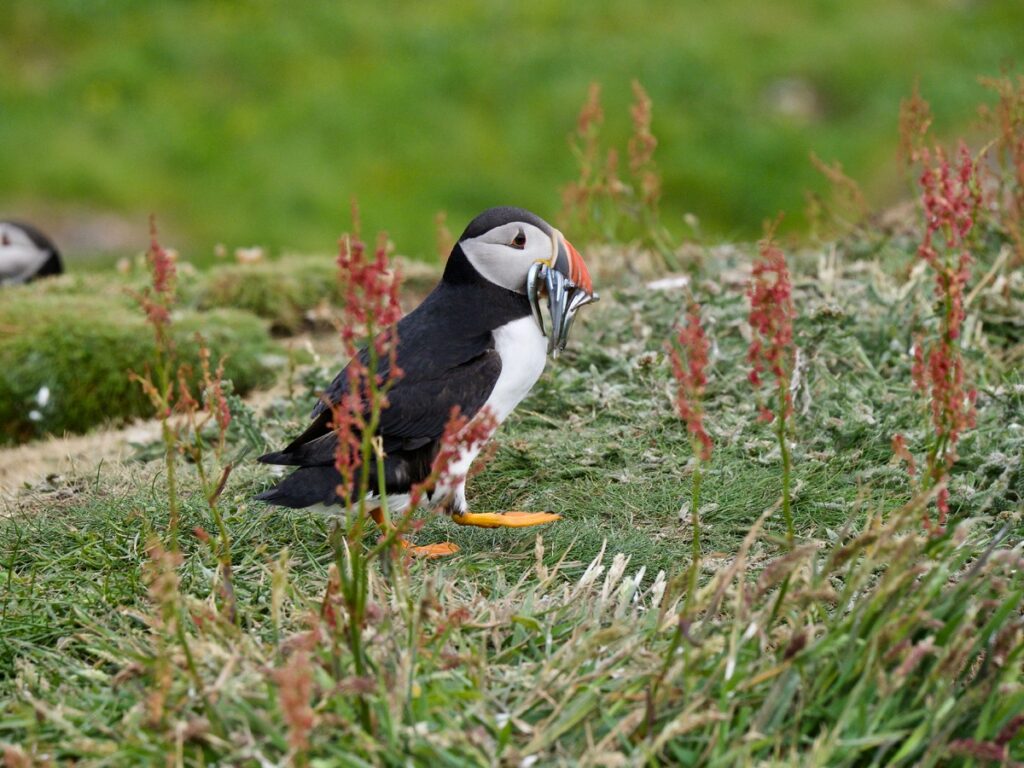
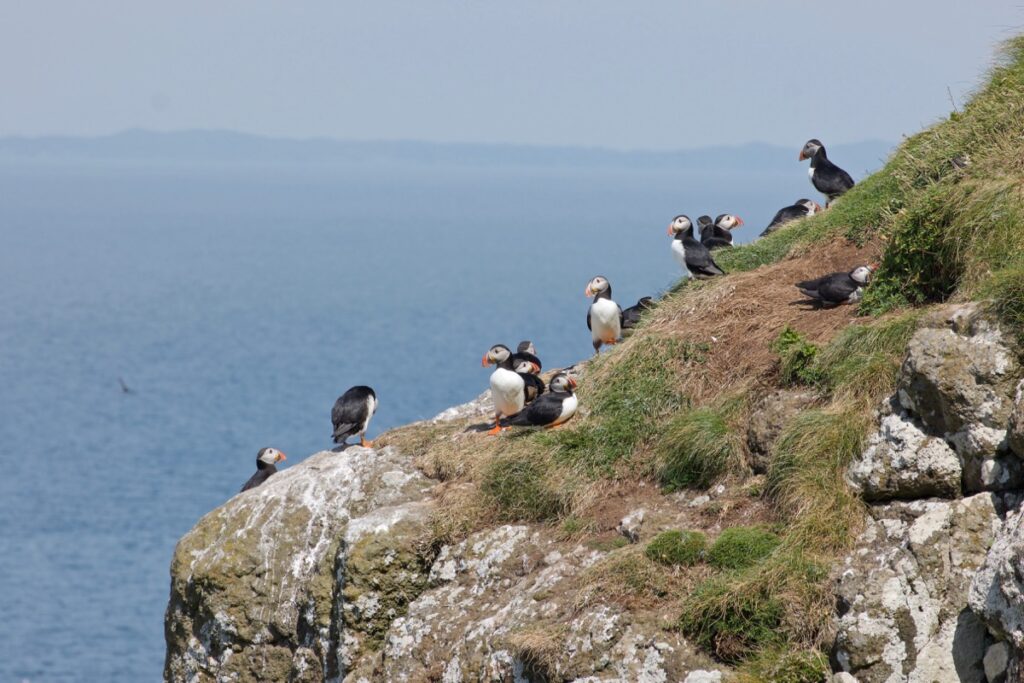
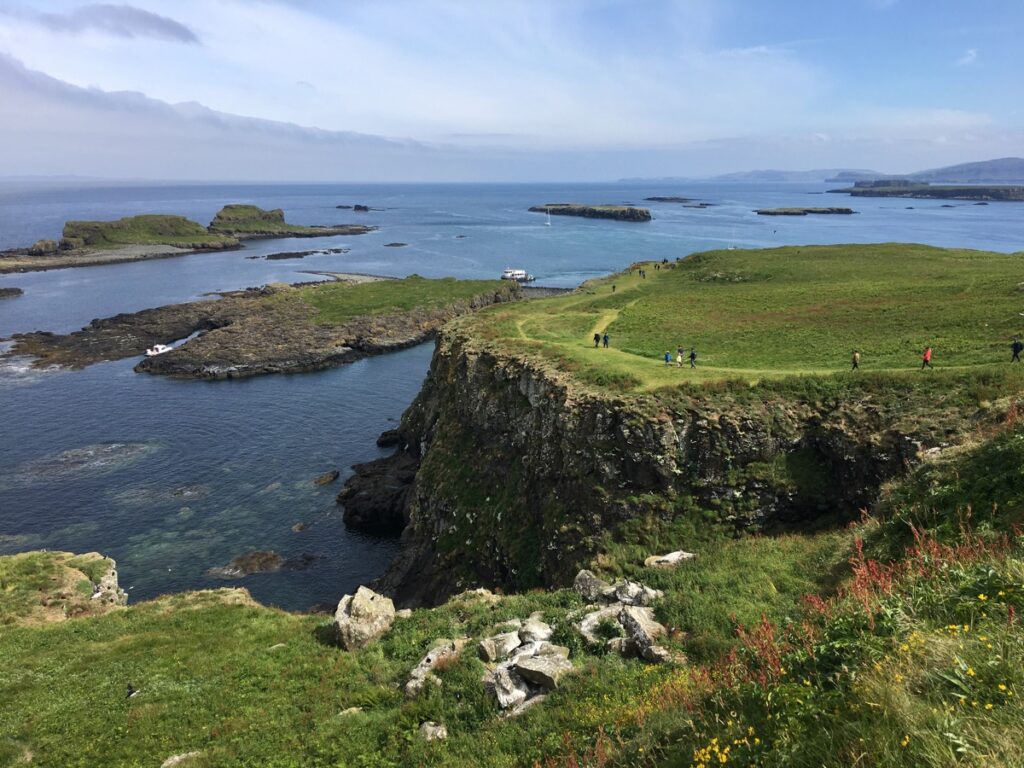
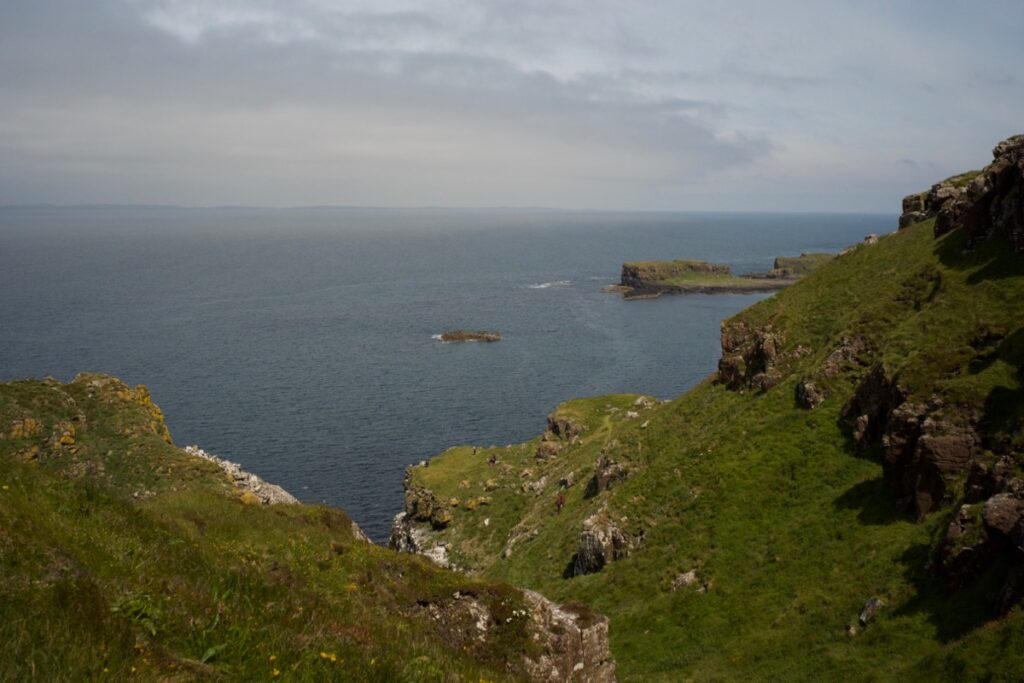

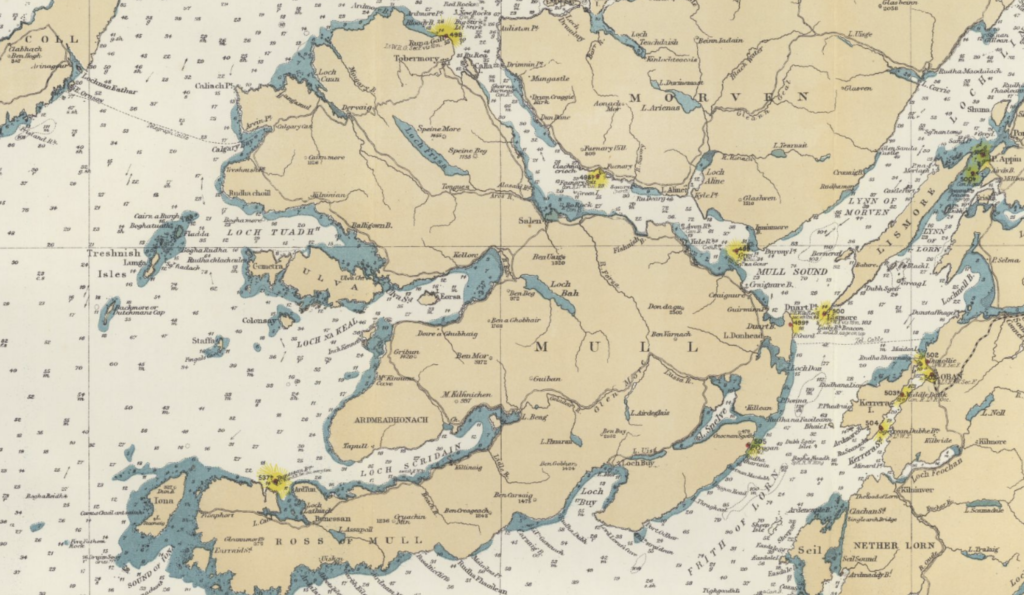
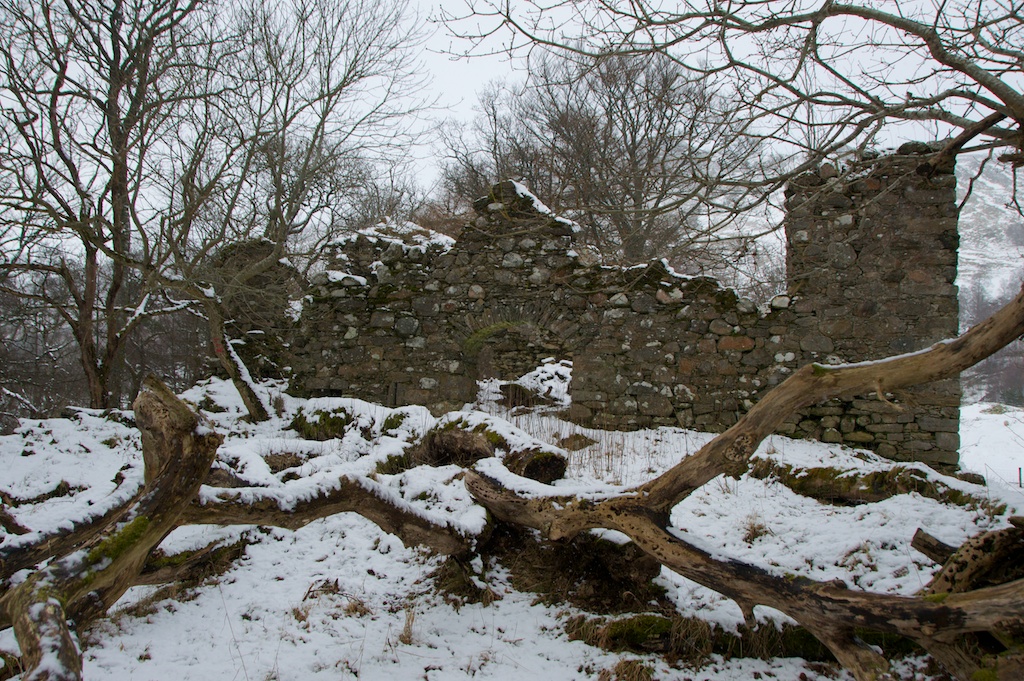
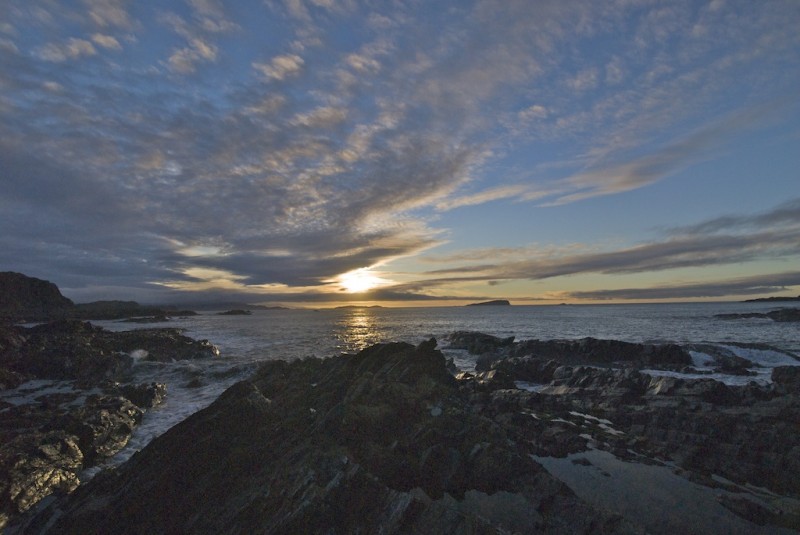
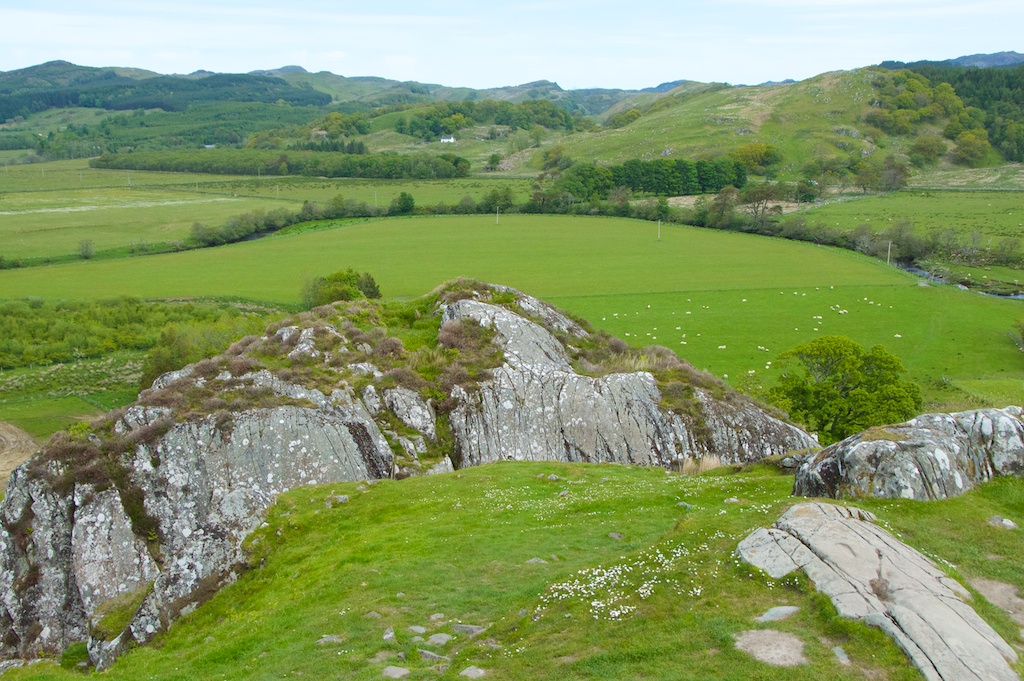
9 Comments
Ashley
Hi Jo, an amazing adventure and well, who doesn’t love puffins! ?♂️
Jo Woolf
Absolutely! I think everyone loves them! You could see the pleasure on people’s faces!
john maclean
Hi Jo,
A very interesting article, thank you. As you hint at, the biggest threat to Lunga at present is visitor numbers over the summer (breeding) months. Access seems to be unregulated and sadly, no matter how ethical the tour operator, the diesel output nor the footfall discriminate. Someday, somehow, sustainable tourism and its limits will have to be addressed. Operators are unlikely to be at the front of this crusade so it comes down to us individually. Just like some choose not to fly, we can choose not to visit or promote fragile gems such as Lunga. Silence, absence are options. I’m interested to hear your thoughts on this issue?
All the best from Iona,
John.
Jo Woolf
Hi John, Thank you! And thank you also for your thoughtful comments. I wish I had the answers. I do know exactly what you mean. We’re all becoming acutely aware of our own (and collectively, humanity’s) impact on wildlife and the environment. On the plus side, through their experiences at places like Treshnish people are hopefully getting a better understanding and appreciation of nature, which cannot be a bad thing. We noticed a young lad, maybe nine or ten, sitting in awestruck silence and watching a puffin – surely a future David Attenborough in the making. I do think numbers of visitors should be regulated, and I’m sure every visitor would fully understand why. It’s a fine line between limiting or withdrawing our own presence in such places in order to avoid disturbance, and inspiring that essential sense of connection and care and passion in the next generation. Just by walking the Earth, we’re bound to have some kind of impact on wildlife. It hurts to see it and to feel it, but perhaps that’s essential so that we can begin to redress the balance. Like I said, I don’t have the answers! I hope other readers might add their own thoughts too. Meanwhile sending you kindest wishes on beautiful Iona!
johnmaclean56hn MacLean
Thanks for taking the time to reply Jo, and at the risk of blocking the airwaves can I make some practical suggestions.
As we all grudgingly know, good intentions and understanding aren’t the same as action. And don’t we all know that one in terms of protecting the environment! If we want to preserve places in a good state for wider nature (and so for our greater benefit), then we should consider staying away. The anthrocentrism that says that our personal interests trump that of everything else is no longer tenable. History has taught us this and sadly, in this current world, we just are going to have to face limits.
The NTS long ago had ‘sacrificial’ properties that were promoted to limit footfall on more vulnerable properties. Staffa in a sense it such and absorbed large visitor volume. It also has plenty puffins…
Nobody is to blame – it is largely a crisis of scale and a struggling economy. Fifty people a day on Lunga is probably sustainable. Two hundred plus probably isn’t!
Is you do go, how you travel? The best eco-blurb in the world counts for little if your boat is a product of the petro-chemical industries and drinks fuel. There are a few low powered / low impact wooden boats that visit Lunga that are much closer to sustainable in practice and ethos. Please support them, they are gold.
Thanks for your patience in reading this!
John.
Kevin Gore
Happy little clowns of the sky 🙂
Jo Woolf
A delightful description! 😀
Finola
Interesting commentary, and as you say, Jo – what a dilemma, to balance sustainability/eco tourism with exposing the wonders of nature to a wider audience. Of course, we all would like to think that WE are not the problem, but I am learning every day what mistakes I make and how to be more responsible with our precious environment. I have to confess I would not pass up the chance to visit the Treshnish Isles!
Jo Woolf
Thank you, Finola! Yes, I agree. I was reading a book about ancient Britain just recently and it struck me that our natural connection with nature, and the fine balance between humans and other life on this planet, started to go downhill when we started farming, because we were manipulating that relationship for our own ends. (I’m not pointing a finger of guilt at Neolithic farmers, just commenting on the observed effect!) As for our current predicament, there are no easy answers but perhaps we are slowly moving in the right direction. I agree with the great ocean explorer Jacques Cousteau, who said that ‘people will protect what they love.’